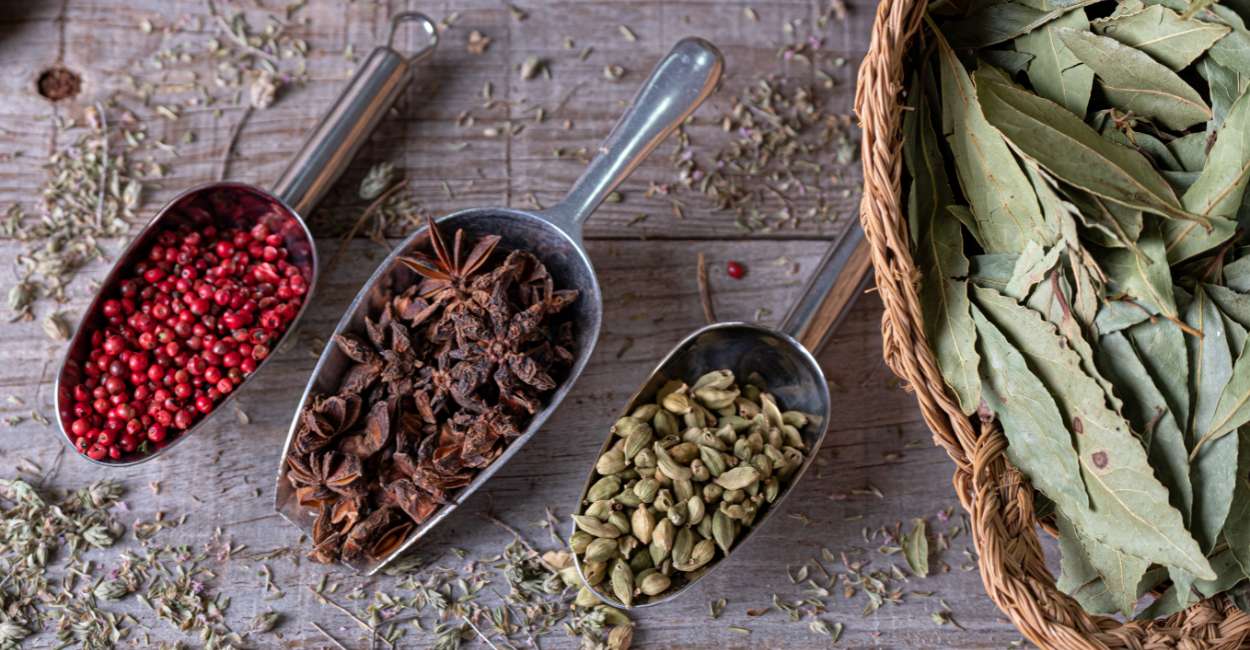
In the diverse world of culinary delights, spices play a pivotal role in adding depth, complexity, and unique flavors to dishes. While familiar spices like cinnamon and cumin grace kitchen shelves, there exists a realm of exotic spices that elevate culinary experiences to new heights.
In this exploration, we embark on a journey around the globe to discover some of the most exotic spices that captivate the senses and enliven the palate.
1. Szechuan Peppercorns:
Originating from the Szechuan region of China, these peppercorns are not your typical pepper. Known for their numbing and tingling sensation, Szechuan peppercorns add a distinctive kick to Chinese cuisine. They are often used in spicy stir-fries, sauces, and noodle dishes, providing a unique and unforgettable flavor profile.
2. Sumac:
Hailing from the Middle East, sumac is a spice with a vibrant red hue and a tangy, lemony flavor. Widely used in Mediterranean and Middle Eastern cuisines, sumac is sprinkled over dishes like salads, kebabs, and rice to impart a citrusy zing. Its versatility makes it a standout among exotic spices.
3. Asafoetida:
Also known as “devil’s dung,” asafoetida is a pungent spice used in Indian and Middle Eastern cooking. Often employed as a substitute for garlic and onions, it adds a savory and umami element to vegetarian dishes. While its aroma may be strong, its taste transforms during cooking, providing a unique depth to curries and lentil dishes.
4. Grains of Paradise:
Originating from West Africa, grains of paradise are peppery seeds with a complex flavor profile. Similar to black pepper but with citrusy and floral notes, they were once a popular spice in medieval Europe. Today, they are experiencing a revival, adding a unique twist to craft cocktails and gourmet dishes.
5. Za’atar:
A staple in Middle Eastern cuisine, za’atar is a blend of dried herbs, sesame seeds, and sumac. The aromatic mix is often combined with olive oil and spread on bread or used as a seasoning for meats and vegetables. Za’atar’s earthy and herbal notes contribute to its status as a cherished exotic spice.
6. Juniper Berries:
While commonly associated with gin production, juniper berries also serve as a unique spice in cooking. With a piney and slightly citrusy flavor, they complement game meats, stews, and pickled dishes. Juniper berries add a distinctive touch, particularly in Scandinavian and Central European cuisines.
7. Grains of Selim:
Native to West Africa, grains of Selim are the seeds of a shrub with a smoky, earthy flavor. Used in various West African dishes, these seeds provide a distinctive taste and are often ground into a spice blend. Grains of Selim add depth to soups, stews, and grilled meats.
8. Epazote:
A herb native to Central America, epazote is known for its strong, pungent aroma and flavor. Commonly used in Mexican cuisine, especially in bean dishes, epazote helps reduce flatulence and adds a unique herbal dimension to soups and stews.
Conclusion:
Exploring exotic spices is a sensory journey that transcends borders and brings the world’s diverse flavors to our kitchens. Whether it’s the tingling sensation of Szechuan peppercorns or the citrusy zing of sumac, these spices contribute to the global tapestry of culinary delights.
Incorporating these exotic gems into your cooking not only enhances flavors but also opens a door to new and exciting gastronomic experiences. As you venture into the world of exotic spices, let your taste buds be your guide, and savor the richness each spice brings to your culinary creations.
FAQs
1. What defines a spice as exotic?
- Exotic spices are characterized by their unique origins, distinct flavor profiles, and cultural significance. They often come from specific regions, contributing to their rarity and novelty.
2. How do Szechuan peppercorns differ from regular black pepper?
- Szechuan peppercorns, originating from China, offer a numbing and tingling sensation, unlike the heat of black pepper. They are prized for their distinctive flavor and are commonly used in Chinese cuisine.
3. What dishes benefit from the addition of sumac?
- Sumac, with its tangy and lemony flavor, enhances various dishes. It’s particularly well-suited for salads, grilled meats, and rice dishes in Mediterranean and Middle Eastern cuisines.
4. Why is asafoetida referred to as “devil’s dung”?
- Asafoetida earns its nickname due to its strong aroma in its raw form. However, when cooked, it transforms into a savory and umami flavor, making it a valuable substitute for garlic and onions in Indian and Middle Eastern cooking.
5. How can one incorporate grains of paradise into culinary creations?
- Grains of paradise, with their peppery and citrusy notes, are versatile. They can be used in both sweet and savory dishes, such as craft cocktails, desserts, and gourmet meals.
6. What makes za’atar a unique spice blend?
- Za’atar combines dried herbs, sesame seeds, and sumac, creating a fragrant and savory blend. It’s commonly mixed with olive oil for bread dipping or used as a seasoning for meats and vegetables in Middle Eastern cuisine.
7. Why are juniper berries not just for gin?
- While renowned in gin production, juniper berries also lend a unique flavor to cooking. Their piney and citrusy notes complement game meats, stews, and pickled dishes in Scandinavian and Central European cuisines.
8. How are grains of Selim used in West African cuisine?
- Grains of Selim, with their smoky and earthy flavor, are often ground into spice blends for soups, stews, and grilled meats in West African dishes. They contribute a distinctive taste to the region’s culinary creations.
